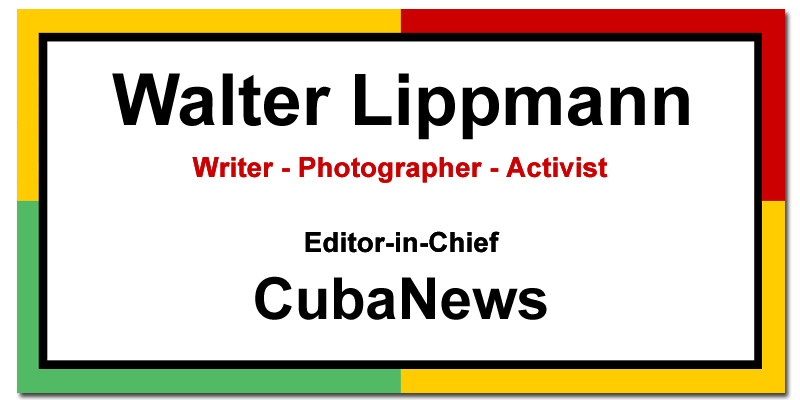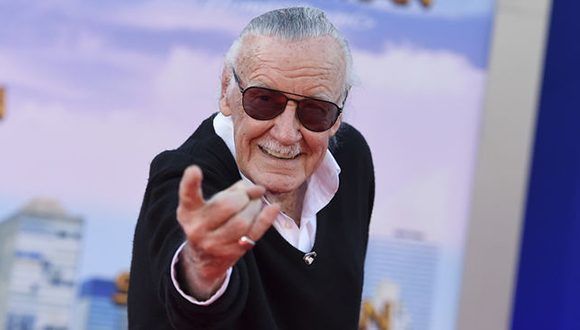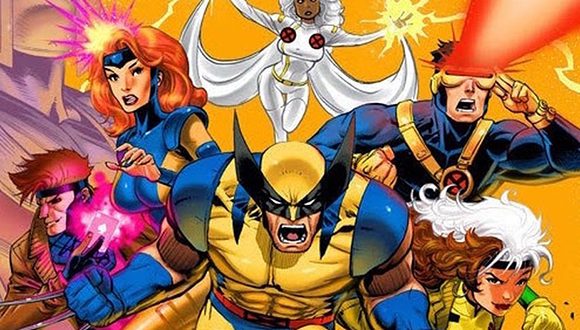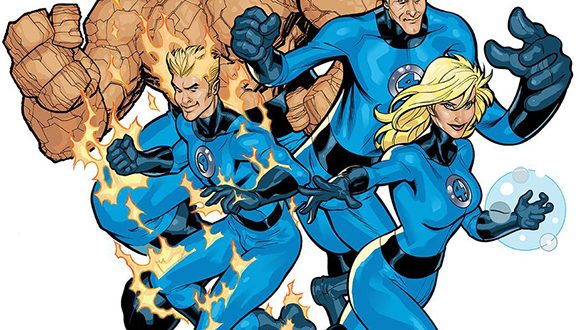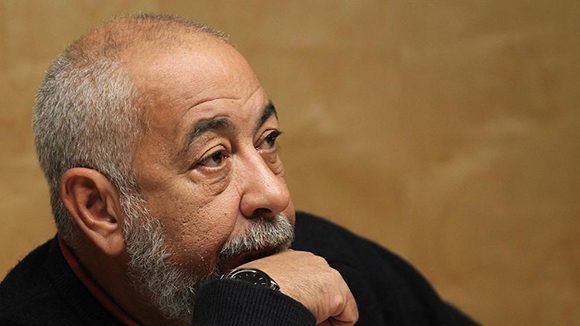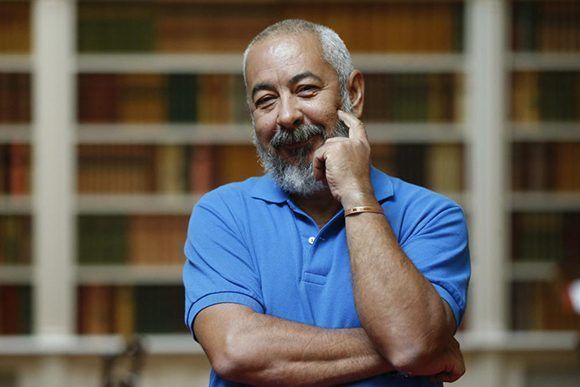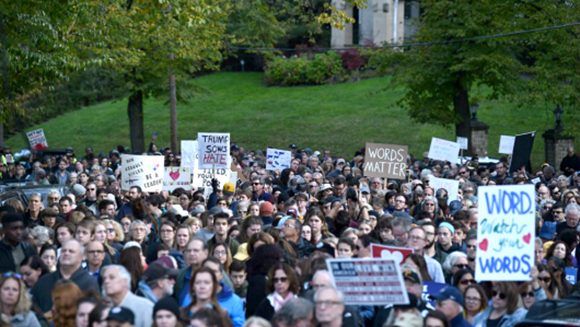CubaDebate 174
Congo-Brazzaville Repatriates Med Students

Congo-Brazzaville authorities decide to repatriate 142 scholarship holders from Cuba
May 8, 2019
Translated and edited by Walter Lippmann for CubaNews.

Cuban Foreign Minister Bruno Rodriguez and his Congolese counterpart Jean Claude Gakosso. Photo: Cubaminrex.
The authorities of Congo-Brazzaville decided to repatriate 142 students from that country who attend universities in Cuba, for “having violently claimed their scholarships” or recorded “deficient academic results,” was reported Wednesday to the AFP.
On the list of expellees are 66 students who had violently claimed their scholarship arrears at the Congolese Embassy in Havana at the end of March.
“These students crossed the red line. They behaved in an unexemplary manner. Even on social networks we saw one of them fighting with a Cuban policeman,” said Jean-Claude Gakosso, Congolese foreign minister.
“The Cuban authorities no longer want them in their territory,” he added during a dialogue with the parents of these students on Tuesday.
The second group is made up of 76 other students who will also be repatriated, but in these cases “for having recorded a succession of (academic) failures, both in medicine and in learning the official language of Cuba (Spanish),” according to Bruno Jean-Richard Itua, the country’s minister of higher education.
Gakosso recently returned from Cuba, where he led a large delegation. In Havana, he spoke with Cuban authorities. No date has yet been set for the return of the students.
“The safety conditions of these young people who will return to the country will be guaranteed. They will be immediately made available to their parents,” said Interior Minister Raymond Zephirin Mbulu.
As of last March, Congolese students in Cuba had accumulated 27 months of scholarship arrears, according to Itua, who said they were paid 12 months after the demonstrations.
Helms-Burton: A Silenced Story (I)

Helms-Burton: A Silenced Story (I)
 By: Ricardo Alarcón de Quesada
By: Ricardo Alarcón de Quesada
Ph.D in Philosophy and Literature, writer and Cuban politician. He was Ambassador to the UN and Cuban Foreign Minister. Presided over the National Assembly of People’s Power of Cuba (Parliament) for 20 years.
April 13, 2019
Translated and edited by Walter Lippmann for CubaNews.
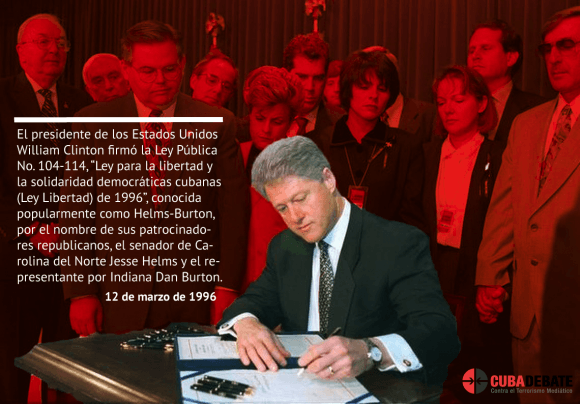
Infographics: Edilberto Carmona
The Trap
Since the beginning of this year, the U.S. State Department has issued several announcements about the partial suspension of the application of some aspects of a chapter of the so-called Helms-Burton Act. It has done so in the deceitful, fraudulent style characteristic of the current rulers. Its clear intention is to create uncertainty and confusion, a purpose for which they have, as usual, the means that are supposed to be used for informing the public.
Above all, it must be said rigorously said that this is a secondary aspect of the Helms-Burton Law, a pseudo-juridical contraption that grossly violates International Law, whose illegality and aggressiveness does not change a bit whether or not the so-vaunted suspension is applied. It is a question of opening or not, now, the possibility of presenting lawsuits before North American courts for acts carried out outside their jurisdiction, in this case in the territory of the Republic of Cuba. Since such litigation could affect foreign companies with investments in the Island, the matter provoked rejection by other countries. It also led the European Union to present a formal complaint to the World Trade Organization in 1996. The matter was then sealed when Washington undertook to suspend the action before its courts, which Clinton, W. Bush, Obama, and even Trump, have consistently done every six months.
This was an exercise repeated for more than twenty years until, on January 16, [2019] it was announced that this time the suspension would be for only 45 days. When the deadline expired in March, they made it known that they would extend it for another 30 days, adding that, as of the 19th of that month, they would allow the filing of lawsuits before their courts against some 200 Cuban companies arbitrarily included in a list drawn up by Washington. Again, in April, they extended the deadline by two weeks, until May 1st, maintaining the exception against Cuban entities.
Already in 1996, Fidel Castro had anticipated that the suspension clause was a “hoax”. Since last January, twenty-three years later, Mr. Pompeo appears, in a doubtful pose, “shedding the daisy”, mocking everyone, especially his European allies, turning the commitment made to them into wet paper.
This game serves, above all, to divert attention from what is fundamental, to what is barely spoken of, and to what I would like to refer to, trusting in the benevolence of the readers of Por Esto!
The Helms-Burton Act has four Chapters or Titles. The first turns into Law, all the measures, which until then were executive decisions, that shape the economic, commercial and financial blockade imposed on Cuba, widens it, and tries to extend it all over the planet. The infamous policy, thus codified, could only be eliminated by a decision of both Houses of the U.S. Congress.
The Second describes, with a certain level of detail, what would happen with the hypothetical defeat of the Cuban Revolution as a consequence of the economic war. There would then be what they call a “transition period” during which all the institutions of Cuban society would be dismantled and the country would be under total U.S. domination. So that no one can doubt it, the process would be led by a U.S. official appointed by the President of the United States, whom the law discreetly calls Cuba Transition Coordinator. This true proconsul was actually appointed by W. Bush, although he never fulfilled his mandate on the island. He had to devote himself to promoting, outside Cuba, the Transition Plan that Bush, in compliance with the law, presented to Congress in 2004 and in an expanded version in 2006 and that no one has repealed.
Throughout Title II, there is a redundant insistence on the concept that for the elimination of the blockade and future relations with a supposed post-revolutionary Cuba, an indispensable condition will be the return of their properties to those who lost them on January 1, 1959 (to this subject I will have to return later).
So far, with Title I and Title II, Helms-Burton is a text that tramples on International Law from beginning to end. Its extra-territorial character is more than obvious since the Cuban archipelago is not part of the territory under Washington’s jurisdiction.
In addition to the above, Helms-Burton added a Title III that establishes the possibility of bringing legal actions before U.S. courts against companies or individuals who use, in any way, properties claimed by those who allegedly owned or inherited them. This Title includes an article that allows the US President to suspend the commencement of such actions for half-yearly periods, to which I devoted the initial part of this essay.
Finally, Title IV, which has already been applied on several occasions, denies visas to enter the United States to businesspeople and their families who use properties that are the subject of a lawsuit.
The Helms-Burton Act reminds us of the warning Carlos Manuel de Céspedes gave us very early on. The Father of the Cuban Homeland, in 1870, discovered that the “secret” of U.S. policy was to “seize Cuba.” Thanks to Helms and Burton, the designs of the Empire appear in the light of day. That they can make them a reality is, of course, something quite different. From Céspedes to Fidel, Cubans have shown that they will fight to the end and that they will never be anyone’s slaves again.
Special for Mexican daily Por Esto! Taken from Cubadebate.
“We Speak for Those Who Can’t Speak”

Cuba Against Animal Abuse:
“We Speak for Those Who Can’t Speak”
 By Thalia Fuentes Puebla, Student of Journalism of the Department of Communication of the University of Havana. On Twitter: @ThalyFuentes and Ismael Francisco
By Thalia Fuentes Puebla, Student of Journalism of the Department of Communication of the University of Havana. On Twitter: @ThalyFuentes and Ismael Francisco
April 7, 2019
Translated and edited by Walter Lippmann for CubaNews.
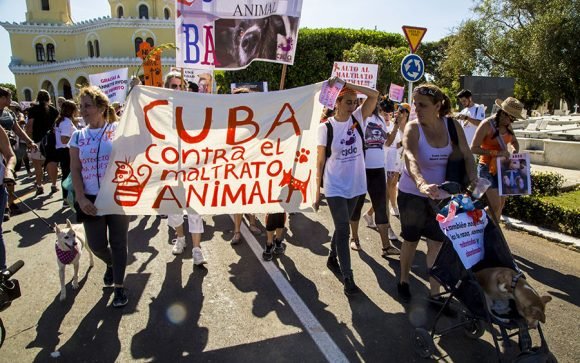
Photo: Ismael Francisco/ Cubadebate
If we mention stories that touch the heart, we cannot forget Rinti, a dog that after his owner died, threw herself at the feet of her protector’s grave until she died, after refusing the food and water offered by the cemetery keepers.
This love was mutual, just a page from Jeannette Ryder’s work in defense of animals. Precisely under her motto: “We speak for those who cannot speak”, hundreds of people arrived this Sunday at her tomb in the Columbus Cemetery to make people aware of the importance of fighting animal abuse.
“Violence is one, it doesn’t matter against what,” quoted one of the many slogans that demanded sensitivity to protect animals. These were attached to orange ribbons, pets of different breeds and sizes along with their owners and posters and T-shirts with inscriptions such as: “Protection for our animals” and “Animal abuse is a crime.”
The animalists pledged to continue to promote pet adoptions, mass sterilizations and deworming. Waiting for a law, they must act in the order of conscience and appeal to civic, individual and social culture.
Jeannette Ryder was an American philanthropist who lived in Cuba at the beginning of the 20th century. She founded the humanitarian organization Sociedad Protectora de Niños, Animales y Plantas, also known as el Bando de Piedad.
She was buried in the Colón cemetery in Havana. Her pantheon is known as the tomb of loyalty. A commemorative sculpture depicts Rinti resting at the foot of the tomb.

Cuba against animal mistreatment. Photo: Ismael Francisco/ Cubadebate.

Cuba against animal mistreatment. Photo: Ismael Francisco/ Cubadebate.
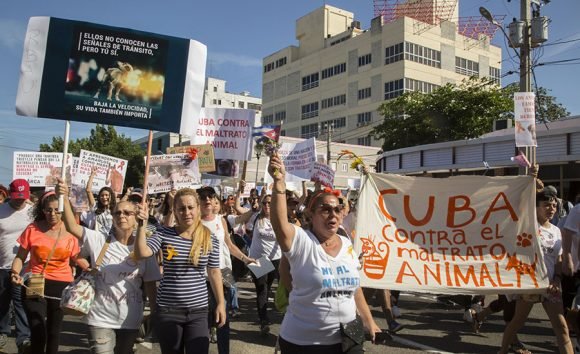
Cuba against animal mistreatment. Photo: Ismael Francisco/ Cubadebate.
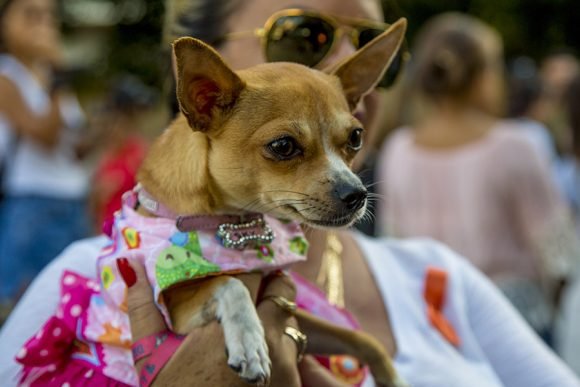
Cuba against animal mistreatment. Photo: Ismael Francisco/ Cubadebate.
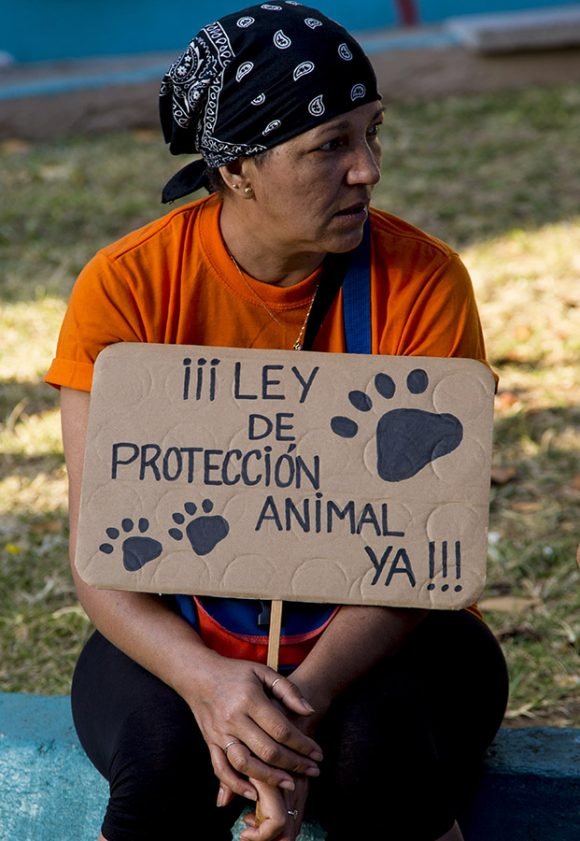
Cuba against animal mistreatment. Photo: Ismael Francisco/ Cubadebate.
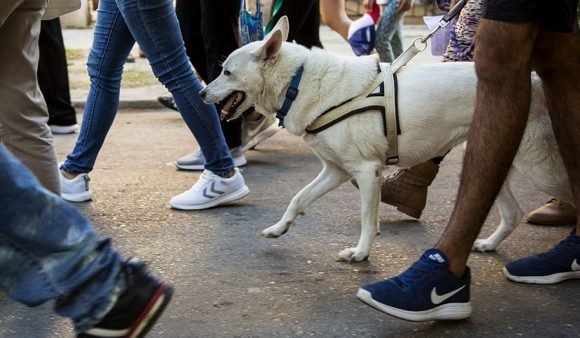
Photo: Ismael Francisco/ Cubadebate.
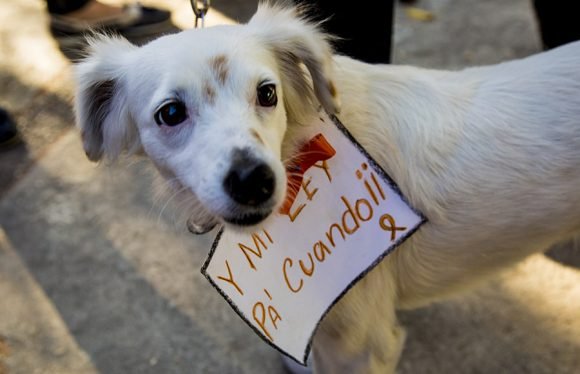
Cuba against animal mistreatment. Photo: Ismael Francisco/ Cubadebate.

Cuba against animal mistreatment. Photo: Ismael Francisco/ Cubadebate.
The Most Difficult Time

The Most Difficult Time
By Enrique Ortega Salinas
March 31, 2019
Translated and edited by Walter Lippmann for CubaNews.
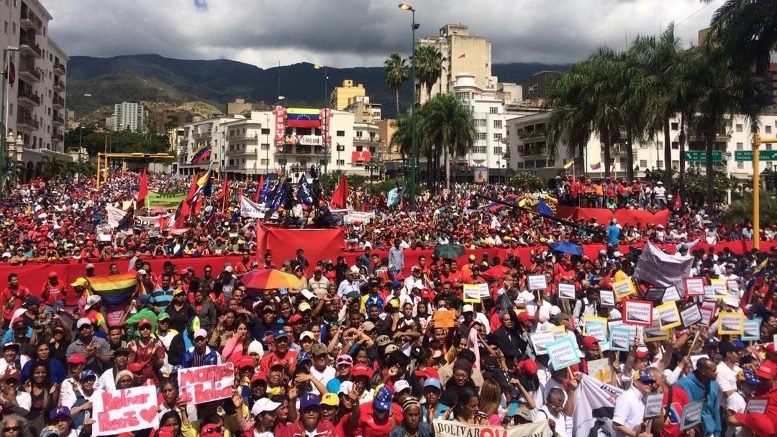
In December I saw people looking for food in the garbage… but it wasn’t Venezuela, it was the United States, not Caracas, but Los Angeles.
It’s clear that Venezuela is having a hard time. The question is why do the international networks and the channels of my country only report these cases in the Caribbean country and do not say a single letter when it happens in the lands of Uncle Sam.
I know of a country that imprisons children with officials who sexually abuse them because they are immigrants; but it is not Venezuela, it is the United States.
When millions of Colombians were fleeing the internal war and the criminal regime of Álvaro Uribe, both Hugo Chávez in Venezuela and Rafael Correa in Ecuador received them fraternally. In the reign of Donald Trump, in late February a complaint against his policy of separating immigrants from their children exposed the sexual abuse to which minors were subjected in captivity. Democrat Congressman Ted Deuch said 154 officials are accused of assaulting children in detention centers in the border area, where two children have already died. 4556 complaints from the Refugee Bureau supported his words.
I know of a country where the popular will is mocked and whoever gets to the presidency is not the most voted in the polls; but it is not Venezuela, it is the United States. Hillary Clinton got 2.8 million more votes than Donald Trump; but the incomprehensible American electoral system prevented her from occupying the White House. As former President Jimmy Carter put it, “The best electoral system in the world is that of Venezuela; the worst is that of the United States.
I also know of a country where one of its provinces has legalized work for 10-year-old children; but it is not Venezuela, the country is Argentina and the province of Jujuy.
I know of a country where there are thousands of opposition journalists persecuted, fired and harassed; but it is not Venezuela, but Argentina. The case of Uruguayan Víctor Hugo Morales, to whom the judges dependent on the Clarín Group and the macrismo fabricate causes left and right, is emblematic, but not unique. Among the most recent cases are those of the El Destape mobilist Lucas Martínez, beaten by the City Police, and the photographer of Página 12, Bernardino Ávila, who after portraying a woman taking a vegetable from the ground (during the so-called “Cuadernazo”) was detained along with other demonstrators for 11 hours.
I also know of a country where its president despises women, blacks, indigenous people and gay people; but it is not Venezuela, but Brazil. Recently, two members of the Landless Movement were assassinated, but neither Almagro nor Trump asked the government for explanations, nor did the large international chains of disinformation give them the space they would have given if they had occurred during the presidency of Nicolas Maduro.
I know of a country that is one of the most corrupt in the world; but it is not Venezuela, but Paraguay, with its eternal Colorado Party, a minimum wage of $370 dollars and an industry minister who boasts that half of Paraguayan workers earn less than that figure. As Oscar Andrade has pointed out, he did not say it with pain, but with pride and satisfaction. It should not be forgotten that the governments of Argentina, Brazil and Paraguay have been applauded by the Uruguayan opposition right-wing.
I know of a country where every four days a trade unionist is murdered, but it is not Venezuela, but Colombia. The denunciation was presented by the Central Unitaria de Trabajadores de Colombia before the International Labor Organization and the Inter-American Court of Human Rights, but impunity prevails. Threats are focused against union leaders in the oil sector, teachers and agriculture. Neither CNN nor Almagro have shown themselves with their souls split in two for these crimes that already imply a blatant attempt to exterminate trade unionism on the part of the right-wing and the Colombian business community.
I know of a country where anyone who dares to criticize the ruler, who, on the other hand, holds power without ever having been endorsed by the ballot box, is punished with imprisonment; but it is not Venezuela, but Spain. It is incredible that in the 21st century the monarchy persists, a real attack against the intelligence of the peoples of Spain, England and Canada, among others; but it is even more incredible that such monarchies pretend to teach democracy to their former colonies.
And I also know of a people that neither sells nor gives up, that neither breaks nor surrenders, that neither fears nor trembles, in spite of the permanent harassment and the immense power of its adversaries… but it is not that of Argentina, Brazil, Paraguay, Spain, Colombia or the United States…
It’s the one from Venezuela.
(Taken from the magazine Revista Caras y Caretas)
International Men’s Day, November 19th

November 19th: International Men’s Day
November 19, 2018
Translated and edited by Walter Lippmann for CubaNews.
International Men’s Day is celebrated in 45 countries around the world on 19 November. The date was first established in 1992 by Thomas Oaster, a professor at the University of Missouri-Kansas in the United States, and popularized in 1999.
It is currently supported by the United Nations (UN). In Latin America there are few countries that have officially joined the celebration, however, each year its recognition increases in the region.
November 19 seeks to promote gender equality, male non-discrimination and highlight the contributions they make to society on a daily basis.
It also aims to highlight problems affecting men on a global scale, such as mental health, toxic masculinity and the prevalence of male suicide, adds The Independent.
The date has not been without criticism. As leaders of the global MenCare.org campaign ask: “Why do we need an international men’s day when we already have the rest of the year?
In a column published in the Huffington Post, Michael Kaufman and Gary Baker criticize the existence of a day that tries to resemble International Women’s Day, March 8, as men occupy a privileged position in society.
Scholars instead call for existing days, such as Father’s Day, to be used to highlight how men can contribute to gender equality and how toxic masculinity is one of the factors contributing not only to inequity, but also to impoverishing men’s mental health and relationships, both familial and personal.
Men die by suicide at a higher rate than women worldwide. Most of the more than 800,000 people who take their own lives each year are male, according to the World Health Organization.
President Evo Morales joins in congratulations
President Evo Morales launched a congratulation for the date, through his Twitter account, @evoespueblo.
In the tweet, he alluded to the role that men play in Bolivian society and their contribution to the country’s development.
https://twitter.com/evoespueblo/status/1064448748439461888
On International Men’s Day, greetings and congratulations to our Bolivian brothers. To all the grandparents, parents, siblings, spouses, children and friends, who contribute with their effort and work to the development of our beloved homeland.
1:22 AM – 19 Nov 2018
Caster Semenya Challenges IAAF

Caster Semenya
The athlete who challenges the IAAF to allow her to compete as a woman without hassles

By Yunier Javier Sifonte Díaz
Graduated in Journalism from the Central University “Marta Abreu” of Las Villas in 2016. Journalist from Telecubanacán.
October 25, 2018
Translated and edited by Walter Lippmann for CubaNews.
In 2009 Caster Semenya astonished everyone with her triumph at the World Athletics Championships. She was 18 years old at the time and crowned a season in which she dropped seven seconds to her best time in the 800m flat. In Berlin, the mark of the final took her to 13th place of all time and meant the widest margin of a champion compared to her rivals. However, as soon as she passed the finish line, accusations began to haunt her.
“She is a man,” said Italian runner Elisa Cusma, and as a powder the media replied. “Master Semenya is he or she,” said one of the Spanish newspapers accredited in the German capital on the front page. Meanwhile, another prestigious European newspaper began the day with “Semenya’s sexual ambiguity”. Above Usain Bolt’s three records, the news became the success of the tournament.
Then the IAAF demanded gender tests to confirm that she was a woman. There they discovered that the South African woman did not have a uterus or ovaries, but she did have internal testicles and testosterone levels three times above normal. Caster Semenya suffered from hyperandogenism. The results came out 21 days after the gold medal. And in the midst of the public debate about her sexual identity, many forgot that she was a teenager who never questioned her status as a woman.
This is confirmed by her family in Limpopo, South Africa’s northernmost province and the land where she was born in January 1991. “She played like all girls,” the grandmother said in an interview with the BBC, “but she also liked to run and always excelled at it. For many people, however, Semenya has a man’s back, voice and face, and looks different to the naked eye.
Amid the controversy, the IAAF required her to limit her blood testosterone levels to 10 nanomoles per liter (nmol/L), a decision that forced the athlete to take medication to control her body. However, she still repeated the universal title in 2011 and won the Olympics a year later, but so much time fighting herself in the end turned out to be too much.
In 2013 she didn’t even attend the World Cup and two seasons later she finished the semifinals in last place. Her career wasn’t so successful anymore… until another intersex runner raised her voice.
It was Dutee Chand, an Indian sprinter unable to attend the Commonwealth Games by refusing to limit testosterone values. After her complaint, the Court of Arbitration for Sport (CAS) considered that there was no evidence capable of demonstrating the advantage of athletes with hyperandrogenism.
The return to the elite
The verdict removed the fourth year of regulations and Caster Semenya once again displayed all her power in Rio de Janeiro, the London World Cup and the Diamond League stops. Step by step, the South African rose in the historic ranking, won her first medal in the 1500m and won several nominations for best athlete of the season. But on April 26 of this year another IAAF decision threatened his career again.
According to the athletics governing body, athletes with hyperandrogenism would be forced to reduce their testosterone levels to 5 nmol/L by November 1, 2018. Otherwise, their only option was to compete as men, move to tests such as long-distance races and pitches or participate in divisional events for intersex athletes.
To support its proposal, the IAAF released a study which states that no woman should record more than 5 nmol/L of testosterone, “but those with differences in sexual development can have very high levels, which extends to the normal male range and even beyond. It was the conclusion that TAS did not find in its first research.
According to the report, “a higher proportion of testosterone increases muscle mass by 4.4%, strength by 12-26%, and hemoglobin by 7.8%. Experts estimate that the advantage of having circulating testosterone levels in the normal range of men rather than in the normal female range is greater than 9%.
When the analysis came out, the South African relived the same shock that accompanied her after her gold medal in 2009. Nearly a decade later, just two years after the last pill to control her body, her name was back in the headlines again. Although the rule doesn’t mention her directly, her face became one of the most wanted. And this time, far from the Berlin teenager, she decided to stand up and face everyone.
“I just want to run naturally, the way I was born. It’s not fair to be told that I have to change. It’s not fair for people to question who I am. I’m Mokgadi Caster Semenya, I’m a woman and I’m fast,” he said just three months ago when he filed an appeal with the Court of Arbitration for Sport to stop the controversial decision.
The athlete’s lawyers argued that the measure “is discriminatory, irrational and unjustifiable,” and that it violates the Olympic Charter and human rights. The IAAF, for its part, maintains its argument about the need to “create categories of competition that guarantee the success determined by talent, dedication and hard work, instead of other factors that are not considered fair or significant, such as the enormous physical advantages that an adult has over a child, or a male athlete over a woman.
However, the news of the last days is in the announcement of postponing for five months the implementation of the rule, in order to wait for the verdict of the CAS and thus avoid the delay of the process initiated by Semenya affects other athletes involved. Now everyone is waiting for the result before March 26th.
The new debate
“Prolonging uncertainty for athletes seeking to compete next year and beyond is unfair, so we have reached an agreement with the claimants. We have agreed not to enforce regulations against anyone until the regulations are respected. In return, they have agreed not to prolong the process. All athletes need this situation resolved as quickly as possible,” said IAAF President Sebastian Coe.
Although the director claims to have full confidence “in the legal, scientific and ethical basis of the Regulations and therefore I hope that the Court of Arbitration for Sport will reject these challenges”, this delay means hope for Semenya and for the South African Athletics Association.
According to the Guardian, the president of the African body, Aleck Skhosana, the rules will have a “discriminatory effect on female athletes” and his duty lies in “protecting all female athletes, because the regulations marginalize certain female athletes on the basis of natural physical characteristics and/or sex.
And there lies the key to the whole affair. For Semenya, its lawyers and many of its defenders, it is unfair to proscribe a person with physical or genetic conditions different from the rest, but who was born this way and never took prohibited substances or underwent any medical treatment to achieve it.
“No one questions the strides of Usain Bolt, the wingspan of Michael Phelps or the cardiovascular system of the Spanish cyclist Miguel Indurain. There is no such rule among men,” they say.
For its part, although the IAAF study recognizes that in tests such as hammer throwing – a specialty dominated by European and white athletes – the excesses of testosterone in blood offer an even greater advantage, the rule does not apply to those throwers. Many then question whether there is also discrimination on the basis of skin colour or geographical origin.
“It is always worrying, as a matter of law, when policies seem to be aimed at limiting the participation of a small group of people,” Suzanne Goldberg, director of Columbia University’s Center for Gender and Sexuality Law, told AFP. Her statements, along with those of the Women’s Sports Foundation and the organizers of the prestigious Wilma Rudolph Courage Award, shed light on an issue that does not yet have a clear end.
If CAS rejects the South African runner’s arguments and ultimately applies the decision, she must limit her testosterone or consider the option of climbing to 5,000 or 10,000 flat meters, tests where for now the rule is not effective. Meanwhile, if she wins the legal battle, it is almost certain that the world will continue to see the strides and master races of a girl who for a long time has struggled not to lose her essence as a woman.
Stan Lee, 1922-2018

Comics legend Stan Lee, creator of Hulk and Spiderman, dies at 95.
Published in: USB Channel
November 12, 2018
Translated and edited by Walter Lippmann for CubaNews.
The legend of the comic Stan Lee, responsible for emblematic characters such as Spiderman or Hulk, died this Monday in Los Angeles (USA) at the age of 95, reported the media specialized in news of famous TMZ.
“My father loved all his fans. He was the greatest and most decent man,” Joan Celia Lee, the artist’s daughter, told TMZ.
The author had suffered numerous health problems in recent times and had lost Joan Lee, the woman he was married to for nearly seven decades, in 2017. “And I want you to know that I still love you all,” said the comic book editor in one of his final videos.
These are some of his best-known creations for the Marvel company:
Spider-Man [con Steve Ditko]
It’s often thought that Stan Lee invented all the famous Marvel Comics superheroes. The truth is that he created many, but usually with the essential contribution of legendary cartoonists. The most famous case: Spiderman, conceived together with the cartoonist Steve Ditko for Amazing Fantasy magazine #15 (1962). It was Lee who insisted that the main character be a teenager, busy with everyday issues like paying rent and courting his beloved Mary Jane.
The Avengers [with Jack Kirby]
 On April 27, 2018, the film Avengers: Infinity War was released, inspired by a group of some of Marvel’s most important superheroes. Lee created them with legendary artist Jack Kirby for The Avengers #1 (1963). His original lineup included only five characters: Thor, Iron Man, Hulk, Ant-Man and The Wasp.
On April 27, 2018, the film Avengers: Infinity War was released, inspired by a group of some of Marvel’s most important superheroes. Lee created them with legendary artist Jack Kirby for The Avengers #1 (1963). His original lineup included only five characters: Thor, Iron Man, Hulk, Ant-Man and The Wasp.
Hulk [with Jack Kirby]
Works such as The Strange Case of Dr. Jeckyll and Mr. Hyde, by Robert Louis Stevenson, are a clear inspiration for Hulk’s character. But the originality of the character is that what activates Dr. Bruce Banner to become the incredible Hulk is anger. The comic strip is also an alert to the dangers of scientific experimentation. It was created by Lee and Jack Kirby for The Incredible Hulk #1 (1962).
Iron Man [with Don Heck, Jack Kirby and Larry Lieber]
 The film Iron Man (2008) started the so-called Marvel Cinematographic Universe. Played by Robert Downey Jr., Iron Man is one of cinema’s most successful superheroes and the undisputed leader of the Avengers. His origins are curious, as Tony Stark is initially a capitalist with few scruples and problems with drinking, who sells weapons. A splinter near his heart forces him to wear armor all the time, with which he decides to fight evil. It was created by Lee along with artists Don Heck, Jack Kirby and his younger brother, Larry Lieber, for Tales of Suspense #39 (1963).
The film Iron Man (2008) started the so-called Marvel Cinematographic Universe. Played by Robert Downey Jr., Iron Man is one of cinema’s most successful superheroes and the undisputed leader of the Avengers. His origins are curious, as Tony Stark is initially a capitalist with few scruples and problems with drinking, who sells weapons. A splinter near his heart forces him to wear armor all the time, with which he decides to fight evil. It was created by Lee along with artists Don Heck, Jack Kirby and his younger brother, Larry Lieber, for Tales of Suspense #39 (1963).
X-Men [with Jack Kirby]
The X-Men is a group of superheroes who have in common that they are mutants; they did not acquire their powers by accident or extraterrestrial origin, but by a genetic factor. The X-Men are the perfect metaphor for intolerance towards those who are different. The original members were Cyclops, Beast, Angel, Jean Grey, Ice-Man and Professor X. It was created by Lee with Jack Kirby for The X-Men #1 (1963), although it is commonly considered that the X-Men lived their best time when Len Wein and Chris Claremont took over the reins of the cartoon.
The Fantastic Four [with Jack Kirby]
It was with the Fantastic Four that Marvel Comics skyrocketed in sales and ushered in a golden era for this publishing label. Stan Lee and Jack Kirby set out to create a new group of superheroes, with unpublished characters. The Fantastic 4 were a success for their novelty: they had no secret identities and the dynamics of its members was that of a family. It debuted in Fantastic Four #1 (1961) and many consider that it represents the best collaboration between Lee and Kirby.
(With information from EFE and CNET)
Leonardo Padura Wins Barcino Prize

Leonardo Padura wins the Barcino Historical Novel Prize
October 10, 2018
Translated and edited by Walter Lippmann for CubaNews.
The Cuban writer Leonardo Padura has won the International Prize for Historical Novel Barcino, which is awarded in the framework of the Barcelona Historical Novel literary contest, which this year reaches its sixth edition, as reported today by the Institut de Cultura de Barcelona, organizer of the event.
The jury has decided to award the prize to Padura because his works “are novels written with the resources of the black genre that become existential, social and, naturally, historical stories”.
“In the same way that we learned about the Spanish Transition with Pepe Carvalho and much of the history of the United States in the 20th century with Harry Conejo Angstrom by John Updike, the best way to walk through revolutionary Cuba is in the company of the great Mario Conde”, the protagonist of Padura’s novels, added the jury.
Leonardo Padura (Havana, 1955) received the Premio Princesa de Asturias de las Letras in 2015 for his work as a whole and is internationally known for the series of novels about the detective Mario Conde. Padura is also the author of other outstanding literary works such as La novela de mi vida, Herejes, the story book Aquello estaba deseando ocurrir and El hombre que amaba a los perros, about the figure of Trotski and his murderer, Ramón Mercader.
Padura will receive the International Prize for Historical Novel Barcino next November 8 at the Saló de Cent of Barcelona City Council. The jury of the sixth Barcino Historical Novel International Prize is composed of journalist Òscar López, novelist Care Santos, cultural journalist Sergi Doria, writer Enric Calpena and the curator of the Barcelona Historical Novel, Fèlix Riera, who is president of the jury. This prize has previously been awarded to the writers Lindsey Davis, Santiago Posteguillo, Simon Scarrow, Christian Jacq, and Arturo Pérez-Reverte.
(Con información de La Vanguardia)
Terror in the United States

Terror in the United States:
72 Hours Filled with Hate

By José R. Oro, A Cuban engineer who lives in the United States.
October 31, 2018
Translated and edited by Walter Lippmann for CubaNews.

The three terrorists, from left to right: G. Bush, R. Bowers and C. Sayoc. Photos from RT.
On Wednesday, October 24, a white man with a history of violence shot and killed two African Americans, apparently at random, in a store in Kroger, Kentucky, after a failed attempt to break into a church.
After “mail bombs” were sent to people who are President Donald Trump’s main political critics and enemies, authorities arrested a suspect, a man who had vilified and stigmatized Democratic supporters and minorities with hateful messages on social networks.
And on Saturday morning, 27, a man shouting anti-Semitic insults in the best style of Nazi Germany’s brown shirts opened fire on a Pittsburgh synagogue, killing 11 people attending religious services.
Those three criminal incidents that occurred in just 72 hours had only one thing in common: hatred.
Death in the grocery store
Gregory Bush, a 51-year-old white man, first attempted to enter a church in Jeffersontown, Kentucky, just outside Louisville. It was the first predominantly black Baptist church, and Bush supposedly knocked on the door and tried to open it, but failed to get in. The doors were closed.
He then went to a Kroger chain store, where he shot two people, both African Americans. The first victim was Maurice Stallard, 69, who was with his 12-year-old grandson. The second was Vickie Jones (67) who was killed in the parking lot while the attacker fled.
Gregory Bush has a long history of mental disorders, of making racist threats, and repeatedly called his ex-wife the N-word (nigger), as part of a long criminal history that includes domestic violence, and other disturbances of order.
Terror by Mail
As the shooting in Kentucky took place, the number of suspicious packages in the mail grew.
The first was discovered Monday afternoon at the home of Democratic (and multimillionaire) donor George Soros. On Wednesday morning, two more, one addressed to former Secretary of State Hillary Clinton, and another to former President Barack Obama. Four more were to be found before the end of the day, including a bomb-package sent to CNN’s New York offices, which led to the evacuation of the entire Time Warner Center complex. Another package was addressed to former CIA director John Brennan.
On Friday, news of more packages arrived and then the arrest of a 56-year-old man named Cesar Sayoc, a Florida resident. Federal authorities said they sent a total of 14 bomb-packages (the kind we know in Cuba as “nipples”), none fortunately detonated, but they were all very real.
Sayoc’s political inclinations were passionately exhibited. On his van, he had a tag that said “CNN sucks. Through two Facebook accounts and three Twitter accounts, Sayoc often posted provocative photos and comments attacking liberals, along with crude conspiracy theories against the United States.
Massacre in the Synagogue

Trio sings a song of mourning in Hebrew. Pastor Steven Cousins of Bethel African Methodist Episcopal Church, and Rabbi Giora Lilienthal, both from Connecticut, use the word. Photo: José R. Oro.
On Saturday morning there was a massive shooting at a Pittsburgh synagogue, where hundreds of worshippers had gathered at 9:45 am. Suddenly, a man came in screaming anti-Semitic insults with two guns and an AR-15 rifle and opened fire. He killed 11 people. Six more were injured.
Robert Bowers, 46, was identified as the gunman and arrested. He had frequently expressed his disdain for Jews in social media and also published xenophobic comments alleging that Jews were helping to transport members of migratory caravans in Latin America.
Rejected by the People of the United States

Hundreds of people, both in the Squirrel Hill neighborhood and throughout Pittsburgh, gathered hours after the attack for an interfaith vigil on behalf of the victims. Photo: Getty Images.
Hundreds gathered for a Saturday night vigil in Squirrel Hill to mourn the victims of the synagogue and show support for the Jewish community.
An interfaith service also took place at the sixth Presbyterian Church in Squirrel Hill on Saturday night.
At 5 p.m. a vigil at the Jewish Community Center (what we know in Havana as the Hebrew Community) in Woodbridge, Connecticut, brought together more than two thousand people from New Haven County.
The attendees were Christians, Jews, Muslims (2 families, one Turkish and one Bangladeshi), whites, blacks, Hispanics, Asians, children, adults and the elderly. All the best of the American people were present.
I asked several people what they thought about the cause of this unprecedented terror. All the presenters agreed that President Donald Trump’s policy of hate and threats (both nationally and internationally), the irresponsibility of his comments in the media, and his unrestricted support for the NRA (National Rifle Association) contributed to and motivated these crimes.
Was one of the three terrorists an Islamic fundamentalist? Or a radical leftist fanatic? A Russian, Chinese or Venezuelan agent? None of the above, all supporters of Donald Trump, all with a history of violence, which one imagines would give him no chance to buy arms or ammunition. Everyone in the vigil comments with anger.
Donald Trump, with his irresponsible tweets and media shows insulting minorities and anti-immigrant attitudes, has been the catalyst that the sewage of American society has overflowed and is flooding the country.
With great prudence, I asked some attendees what they knew about the “embargo against Cuba” and about the upcoming U.N. vote. Two people told me that they knew absolutely nothing about the blockade and assured me that they would be informed about it. Two others told me that they knew about the blockade and that they were vertically against it. And one of them, Eliot Meyers, looked at me in astonishment and asked me, “But didn’t Obama remove the embargo against Cuba? I explained to him that the “embargo” is in force and being applied with a maximum of inclement and cruelty by President Trump. Elliot lowered his head and said to me: “These are the same criminals, those who kill in the synagogues or send bombs and those who want to destroy the Cuban people. Elliot is an appliance dealer from Orange, Connecticut.
What’s next?

Democrat Congresswoman Rosa de Lauro, a great friend of Cuba, rejected violence. Photo: Bill Clark/ CQ Roll Call.
The pain and bitterness continue throughout the U.S., on a Sunday when people would normally talk about American football games (the Pittsburgh Steelers play at home) and the crucial fifth game of the World Series between Boston Red Sox and the Los Angeles Dodgers. But on this occasion, thousands and thousands are on the street protesting the terror of the fascists and supremacists, and more importantly, their causes, which now have a consensus in the understanding of the people.
The victims will remember the tragedies of those 72 hours filled with hatred, for a long, long time. As early as November 6, in the midterm elections, these savage crimes will motivate hundreds of thousands to go to the polls that day and vote against those who are trying to lead the U.S. to unbridled, uncontrolled fascism and humanity to its certain destruction. Of the many phrases and posters I saw and heard, there were some that impressed me in a special way. One sign read: “We cannot cure a fool, but we can vote against him.
Pittsburgh Protests Trump Pittsburgh Visit

Pittsburgh Protests Trump Visit to Attacked Synagogue
October 30, 2018
Translated and edited by Walter Lippmann for CubaNews.
Hundreds of demonstrators protested Tuesday in Pittsburgh against U.S. President Donald Trump’s visit to the synagogue where 11 people died in an antisemitic attack this weekend.
Demonstrators gathered near the Tree of Life synagogue, where the shooting took place, with banners bearing legends such as “President Hate Out of Our State” and “Trump, Renounce White Nationalism Now,” referring to criticisms that the president has not done enough to stop hate speeches.
Trump arrived at the synagogue on Tuesday accompanied by his wife Melania, his daughter Ivanka and his son-in-law Jared Kushner. The president plans to light a candle for each of the victims of the shooting that shocked the United States.
But for some local personalities, Trump’s visit was not welcome.
A group of Pittsburgh Jewish leaders published an open letter in which they blamed Trump for encouraging the nationalist sentiments that generated the attack and said that until he strongly denounces this and stops attacking “immigrants and refugees,” he will not be welcome in the city.
Former synagogue president Lynette Lederman told the president on Monday to stay away from Pittsburgh, describing him as a “provider of hate speech.
The town of Pittsburgh, still in shock after suffering the worst antisemitic attack in recent U.S. history, buried on Tuesday two of the victims of the tragedy, brothers Cecil and David Rosenthal, 59 and 54 years old.
(With information from AFP)
| M | T | W | T | F | S | S |
|---|---|---|---|---|---|---|
| 1 | 2 | 3 | 4 | 5 | 6 | |
| 7 | 8 | 9 | 10 | 11 | 12 | 13 |
| 14 | 15 | 16 | 17 | 18 | 19 | 20 |
| 21 | 22 | 23 | 24 | 25 | 26 | 27 |
| 28 | 29 | 30 | ||||
